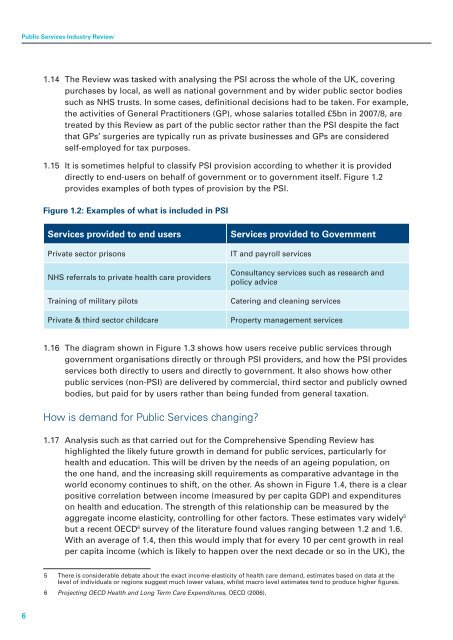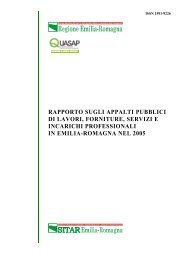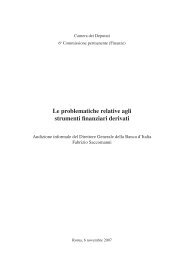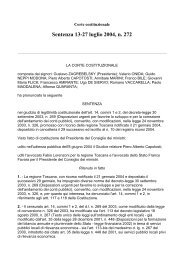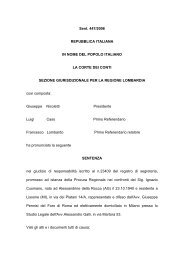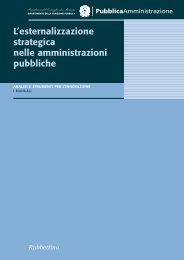Understanding the Public Services Industy
Understanding the Public Services Industy
Understanding the Public Services Industy
You also want an ePaper? Increase the reach of your titles
YUMPU automatically turns print PDFs into web optimized ePapers that Google loves.
<strong>Public</strong> <strong>Services</strong> Industry Review<br />
1.14 The Review was tasked with analysing <strong>the</strong> PSI across <strong>the</strong> whole of <strong>the</strong> UK, covering<br />
purchases by local, as well as national government and by wider public sector bodies<br />
such as NHS trusts. In some cases, definitional decisions had to be taken. For example,<br />
<strong>the</strong> activities of General Practitioners (GP), whose salaries totalled £5bn in 2007/8, are<br />
treated by this Review as part of <strong>the</strong> public sector ra<strong>the</strong>r than <strong>the</strong> PSI despite <strong>the</strong> fact<br />
that GPs’ surgeries are typically run as private businesses and GPs are considered<br />
self-employed for tax purposes.<br />
1.15 It is sometimes helpful to classify PSI provision according to whe<strong>the</strong>r it is provided<br />
directly to end-users on behalf of government or to government itself. Figure 1.2<br />
provides examples of both types of provision by <strong>the</strong> PSI.<br />
Figure 1.2: Examples of what is included in PSI<br />
<strong>Services</strong> provided to end users<br />
Private sector prisons<br />
NHS referrals to private health care providers<br />
Training of military pilots<br />
Private & third sector childcare<br />
<strong>Services</strong> provided to Government<br />
IT and payroll services<br />
Consultancy services such as research and<br />
policy advice<br />
Catering and cleaning services<br />
Property management services<br />
1.16 The diagram shown in Figure 1.3 shows how users receive public services through<br />
government organisations directly or through PSI providers, and how <strong>the</strong> PSI provides<br />
services both directly to users and directly to government. It also shows how o<strong>the</strong>r<br />
public services (non-PSI) are delivered by commercial, third sector and publicly owned<br />
bodies, but paid for by users ra<strong>the</strong>r than being funded from general taxation.<br />
How is demand for <strong>Public</strong> <strong>Services</strong> changing?<br />
1.17 Analysis such as that carried out for <strong>the</strong> Comprehensive Spending Review has<br />
highlighted <strong>the</strong> likely future growth in demand for public services, particularly for<br />
health and education. This will be driven by <strong>the</strong> needs of an ageing population, on<br />
<strong>the</strong> one hand, and <strong>the</strong> increasing skill requirements as comparative advantage in <strong>the</strong><br />
world economy continues to shift, on <strong>the</strong> o<strong>the</strong>r. As shown in Figure 1.4, <strong>the</strong>re is a clear<br />
positive correlation between income (measured by per capita GDP) and expenditures<br />
on health and education. The strength of this relationship can be measured by <strong>the</strong><br />
aggregate income elasticity, controlling for o<strong>the</strong>r factors. These estimates vary widely 5<br />
but a recent OECD 6 survey of <strong>the</strong> literature found values ranging between 1.2 and 1.6.<br />
With an average of 1.4, <strong>the</strong>n this would imply that for every 10 per cent growth in real<br />
per capita income (which is likely to happen over <strong>the</strong> next decade or so in <strong>the</strong> UK), <strong>the</strong><br />
5 There is considerable debate about <strong>the</strong> exact income-elasticity of health care demand, estimates based on data at <strong>the</strong><br />
level of individuals or regions suggest much lower values, whilst macro level estimates tend to produce higher figures.<br />
6 Projecting OECD Health and Long Term Care Expenditures, OECD (2006).<br />
6


